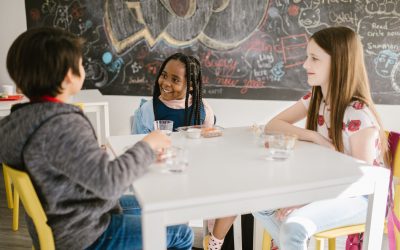Overview
Equipping students with knowledge of health care and social care jobs can be integrated into all subject areas at school. This activity allows students to learn about working in the healthcare field through a fashion design lens while completing a project-based learning project. Students will have a chance to research a health or social care profession and apply that knowledge to creating a uniform that could increase their work performance and output.
NB Curricular Connections
Curriculum Connection:
Personal Wellness 6-8
- Strand: Career Connected Learning – Big Idea: Explore Potential Career Pathways – Skill Descriptors: Critically investigate and describe the labor market and preferred career pathways.
Personal Wellness 9
- Strand: Career Connected Learning – Big Idea: Explore Potential Career Pathways – Skill Descriptors: Critically investigate and describe the labor market and preferred career pathways.
What you’ll need
- Research device
- Paper
- Crayons, markers, color pencils
- iPad (optional)
Instructions
- Students will choose a health or social care profession and complete research on the working conditions, roles/tasks, responsibilities and what a “typical” day at work may look like.
- Students will design a uniform that is suitable for the job based on their research. The design can be either hand-drawn or digitally designed. Students should consider the questions below when choosing the materials, styles, and accessories for the chosen medical career:
- Do they work outdoors or indoors?
- Are they exposed to chemicals, radiation or microbiology?
- Is the work physically labor intensive?
- Does the job require additional items like gloves, mask, headbands, and caps?
- The design of the clothing should demonstrate how it is both safe and efficient for the specific health or social care professional.
- Students may want to complete additional research on the different type of textiles used when designing uniforms and review the benefits and drawbacks of each.
- The design should reflect the chosen profession and students can create a job logo within the design, as well.
- Alternatives: Students can redesign new or updated medical PPE (Personal Protective Equipment). Explain what changes you recommend and why.
- Optional: Students can price out the cost of the materials, the labor, and other factors that go into designing and producing medical clothing.
- Students can research the prices of materials and manufacture costs to best display how the design is either cost-efficient or high-end pricing.
- Students may also look into the environmental impact of the design.
- Presentation: The Student’s design can be presented using different formats and platforms. (i.e., PowerPoint, Infographic, video, poster, etc.) as long as the following information is included:
- Drawings or pictures of the design
- Materials for each piece of clothing or accessories
- Explanation for the design style (e.g., why is it short sleeve, etc.)
- Explanation for the materials used
- Optional: Display cost breakdown (e.g., cost of materials, cost of labor, etc.)
- From 5c and 5d, explain how the design will contribute to the overall efficiency and safety of the health or social care professional’s work.
- Extension: Present the history or timeline of medical uniforms and explain how the improvements have influenced and improved work performance.
Career Connections
- What are some factors (working conditions, workplace culture and environment, workload, etc.) that positively impact the work performance of health or social care professionals?
- What are some factors that negatively impact the work performance of health or social care professionals?
Reflection Activity
Please see the attached PDF for several choices on how you and your learners can reflect upon today’s activity.




